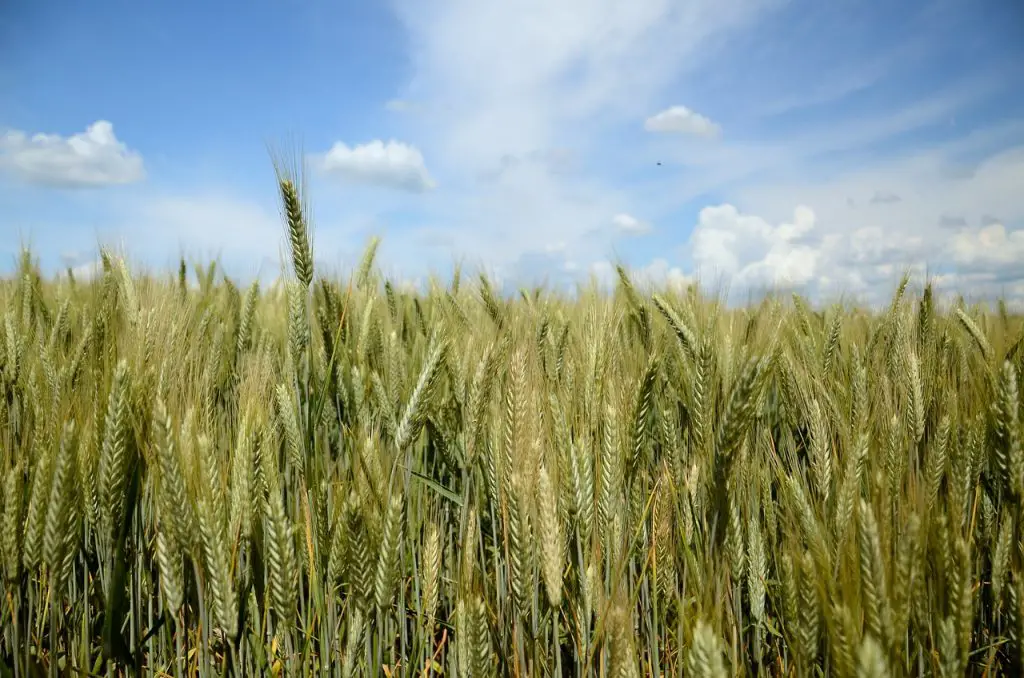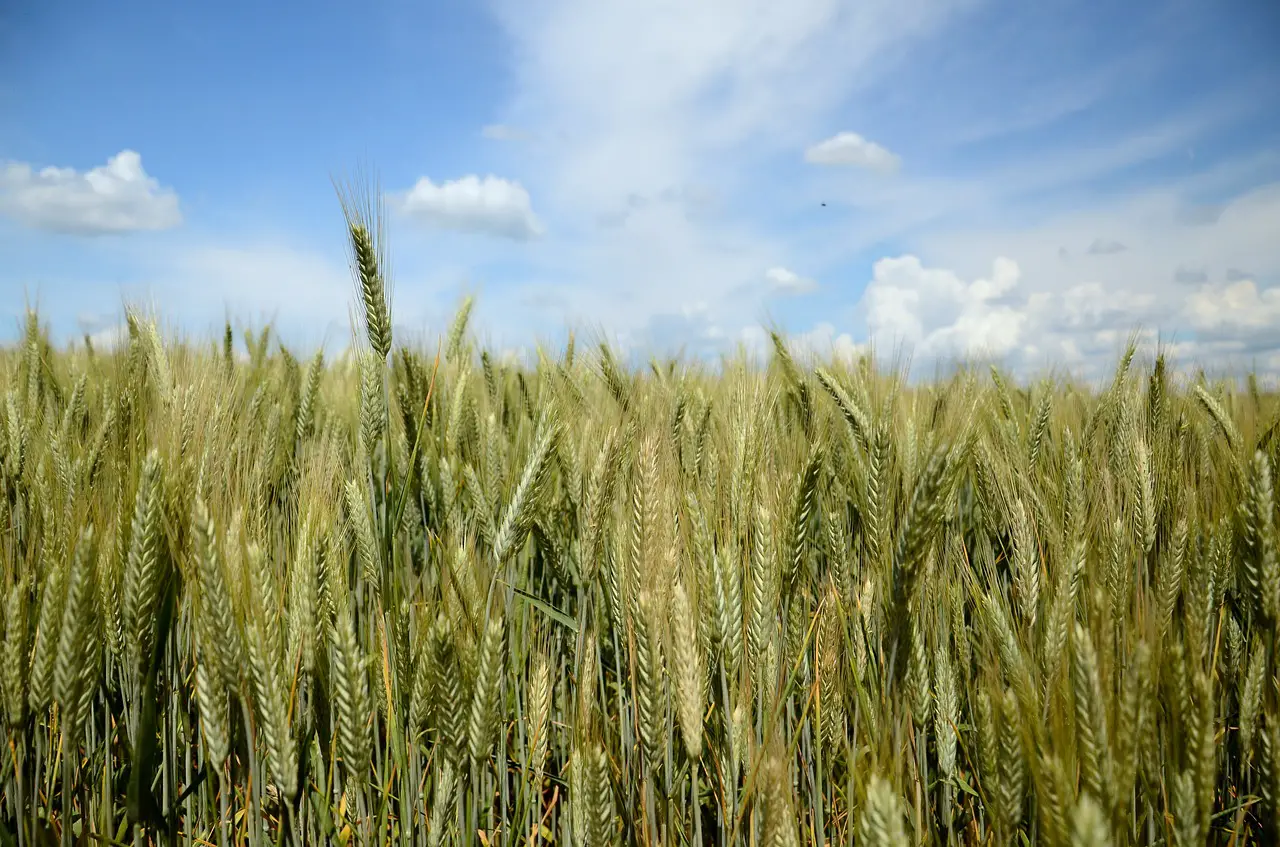Last Updated on February 28, 2022 by Allison Price
Horses are fed hays made from a variety of grasses and mixed grasses. They also get legume hays like clover and alfalfa. Horse owners can choose to feed their horses less traditional hay types, such as wheat barley or oat hays, if these hays are unavailable.
Triticale, a cross between wheat and rye, has been attracting more attention in recent years. It is only a century-old and is the type of hay that is getting more attention.
Triticale was created to combine the best qualities of wheat with the resilience of rye in difficult conditions. Triticale (pronounced trit-ih-KAY) is a hybrid of wheat (Triticum), and rye(Secale) that has been created by plant breeders.
Researchers simply combined wheat and rye to create a new variety that has twice the growth. Triticale is a combination of the nutritional value and rapid growth, heat tolerance, and hardiness of wheat. Although it was first discovered in the late 1800s it wasn’t commercially available until the 1960s.
Studies have not shown that triticale cultivars that are most closely related to rye, such as Abacus or Madonna, are well absorbed by horses. However, cultivars that are close to wheat, including Tahara, are not well absorbed in the small intestines of horses. There are three types of triticale: spring, winter, and fall. Some varieties also target different uses such as hay or grain.
Triticale’s maturity at harvest is crucial when feeding hay to horses. Triticale can be either fall-sown and fall grazed or overwintered in the spring and grazed. Triticale can also be planted in spring and used in the year for seeding as pasture, or cut and used to make hay. Winter triticale is a good alternative to perennial forages. It can also be used to extend traditional grazing seasons into spring and fall.

Triticale has not been widely accepted or demanded despite high hopes. Triticale can be used in organic farming because it does not require pesticides and reduces soil erosion.
The 2007 Census of Agriculture revealed that 464 farms across 30 states raised triticale. The total production was 2.5 million bushels. Washington, Texas and California were the top producing states. Most of the crop was used for pasture and forage. New champions of triticale have emerged in the U.S. over the past decade.
Ted Rogers, Northern Seed Company’s business manager for triticale out of Montana says that triticale is making a name as a dual crop. It is a placeholder for cash crops and is now a highly valuable crop all by itself.
Rogers states that growers love it because of its shorter harvest, which opens up options for longer-day corn. It is planted in the fall and starts to grow. Then it slows down during winter. It is allowed to grow until it reaches the flag leaf stage in spring. Then they chop it up and place it in the silo. Finally, they plant their corn.
Triticale hay is similar to other hay sources. However, horses may have palatability problems if the hay has been dried out or late harvested. If cut and bailed when Triticale hay is fully mature, it can develop sharp awns. These sharp awns can cause ulcerations in horses’ mouths and ears. Horse owners need to inspect Triticale Hay Bales for sharp awns. They should also not feed horses hay with sharp awns.
Sharp, needle-like appendages called awns are found in ripe triticale
Sharp awns in matured triticalehay may cause ulcerations by embedding in horses’ mouths.
(c) 2016 by Pxhere
Semi-awnless winter Bobcats can help to limit these problems. Avoid varieties with hard awns.
Triticale is a higher protein source than its parents, rye or wheat. It can be used in the field to provide green forage crops, as well as being chopped and used as silage and baled to make dry hay.
Winter triticale is vegetative when it is planted in spring. It can be sown throughout spring, summer, and fall. Because seedlings don’t receive the cold treatment or vernalization that is normally done in the fall, there is no heading.
Heads must be formed the following year by vernalization. Vernalization refers to a physiological change that occurs in the seedling. It is usually done in the fall, when seedling temperatures are below 5-7degC. Low light intensity and low light intensity trigger the plant’s development of heads in the next year.
Spring-planted winter triticale mixed with tall varieties oats and barley can be a great source of spring and summer grazing, as well as silage. The barley and the oat:
- They are very active in the initial stages of their growth.
- In the early stages, dominate the canopy.
- Provide excellent forage quality.
The winter triticale dominates the mix after the silage harvest or earlier season grazing. It can provide high quality forage and vigorous regrowth in the late summer and autumn. It also has a lower re-growth potential of perennials and spring cereals.
Triticale is an economically-friendly crop. The varieties that provide good forage for horses may be harvested using the same implements as other types of hay.
Triticale is a grain suitable for horse feed
img alt=”Fields of ripe triticale can be used for horse feed.” data-was-processed=”true” src=”https://s.equimed.com/images/1069/220/0/0.jpg” title=”Field of ripe triticale to be used as grain for horses. “/>
Horses can use field of ripe triticale as grain
Triticale should not be fed as a finely ground product, but as a rolled or flaked product as horses are accustomed to eating other cereals.
Stevanovicigor, c. 2018.
Sources in Australia agree that triticale can be substituted for cereal grains more commonly used in horse diets. These sources have the following recommendations regarding triticale grain for horses:
- Limit the amount of cereal grain per 100kg bodyweight per meal to 500g, and not more that 4g starch per kilogram body weight per dinner.
- To slow down carbohydrate intake, mix cereal grains with equal amounts of chaff.
- To improve your intake, soak, coarse crush, steam flake or pellet the grain.
Triticale can be used in horses’ diets as a sole cereal grain. Triticale is a superior choice for horse diets due to its high starch digestibility.
Triticale can be used as a horse food
- To slow down carbohydrate intake, mix triticale grains in equal quantities with chaff. This prevents over-energetic behavior and diarrhea.
- To increase the intake of triticale grains, you can process them.
- To avoid any other problems, you can compare the cereal grain content of each meal with the animal’s body weight.
Horse feed is best if the starch in the cereal grains is easier to digest in the small intestine. Exceedive starch and sugars are transferred from the small intestine to the large intestine where they can cause excess D-lactic acid. This can lead to physical and metabolic changes such as hyper-energetic behavior, diarrhea and laminitis, and founder (Kohnke and al. 1999).
Triticale has a high starch digestibility that is suitable for horse feed (Rowe and al. 2001). Triticale should not be fed as a finely ground product, as it is with other cereals.



